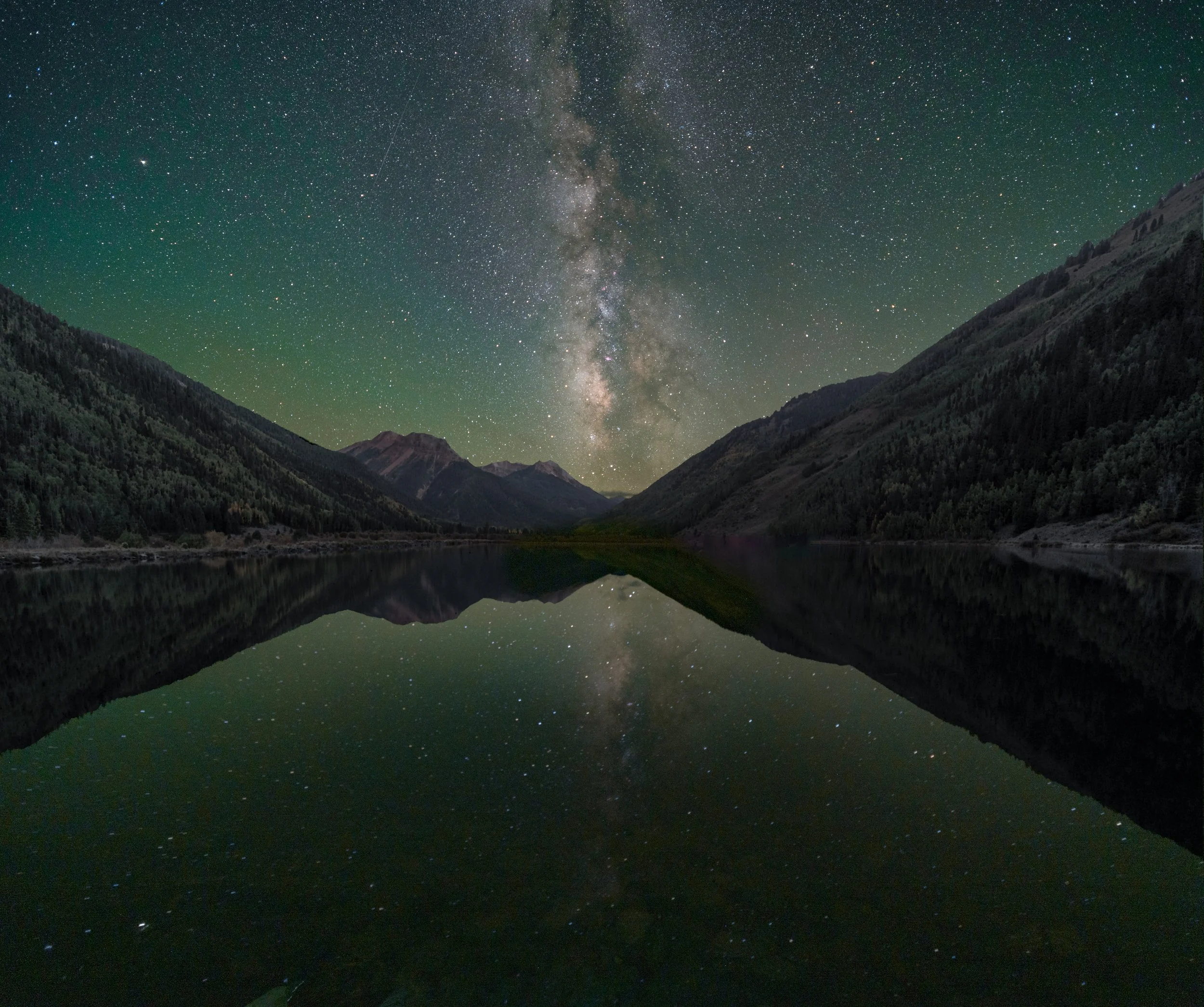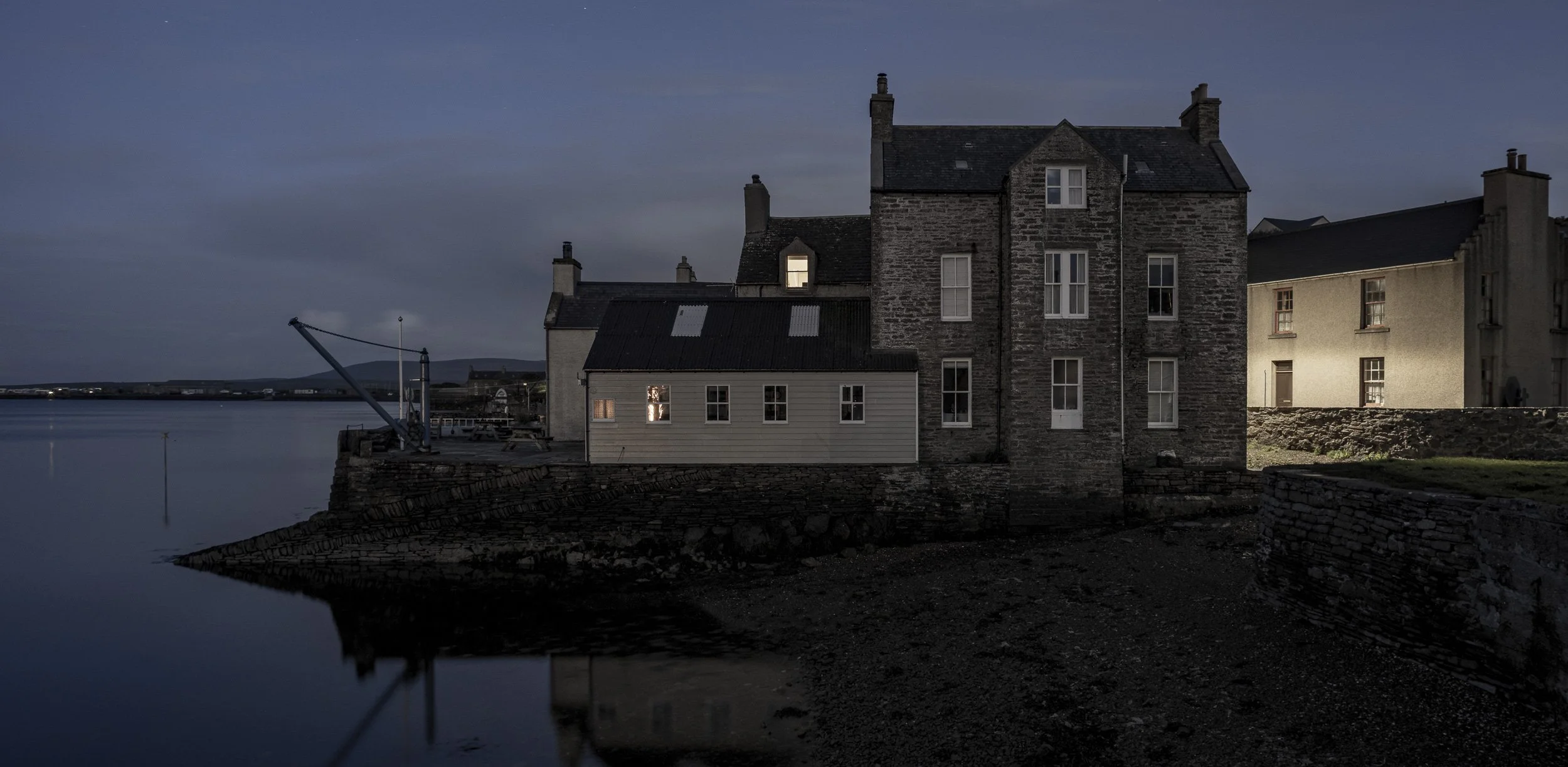As some readers may recall, I cut my night photography chops in San Francisco in the late 1980s, studying with Steve Harper at the Academy of Art. Steve had some strong opinions about what night photography was, and was not. Mainly, night photography was about images that had a certain sensibility, atmosphere or mood about them. Night photography images portrayed melancholia, loneliness, solitude, peacefulness and, perhaps above all, a sense of mystery.
To Steve, night photographs were not taken during the blue hour, in twilight, at sunset or sunrise, and they did not very often feature black skies. Most of all, night photography did not include taking pictures of nighttime sporting events, theater productions or Christmas lights. It also did not include—as is pertinent to this weekend—Fourth of July fireworks!
“As the 241st birthday of the United States approaches, there will no doubt be countless articles and videos about how to take fireworks photographs. ... I think there are more creative ways to photograph the night on this holiday weekend.”
In the many years since, I’ve expanded my own definition in ways that Steve might not agree with if he were still here. For example, he never could come to terms with high ISO images of the night sky. Having been a film shooter for most of his career, Steve was a star trails man through and through. Even after he switched to digital, Steve’s images were all about long exposures–– there was just more of the surrealistic aspect of night photography in star trails than in star points.
But I’ve digressed. As the 241st birthday of the United States approaches, there will no doubt be countless articles and videos all over the web about how to take fireworks photographs. If that’s your thing, have at it. (And be sure to read our post from last year, “Tips For Getting the Most Explosive Fireworks Photos.”)
On the other hand, Steve thought and I think there are more creative ways to photograph the night on this holiday weekend. As an alternative, I’d like to offer you:
12 Things Other Than Fireworks to Photograph on the Fourth of July
1. Photograph the city skyline. (Nope, scratch that—the sky will be full of fireworks.)
Boston, 15 minutes, f/11. Ebony 6x9 view camera with Nikkor 65mm f/4 lens, Fuji Acros.
2. Photograph a bridge or lighthouse. (Hmm, maybe not. Most likely more fireworks.)
Tappan Zee Bridge from Tarrytown, New York. 90 seconds, f/8, ISO 160. Canon 5D Mark II, Nikon 28mm f/3.5 PC lens.
Yerba Buena Gardens, San Francisco. 6 seconds, f/8, ISO 160. Canon 5D Mark II, Nikon 28mm f/3.5 PC lens.
3. If you want to photograph a cliché subject other than fireworks, how about tail lights?
4. Go fishing. Or photograph fisherman and hope they don’t get irritated with you.
Providence, Rhode Island. 1/4 second, f/4, ISO 1250. Canon 5D Mark II, Nikon 28mm f/3.5 PC lens.
5. Go to a cemetery and light paint tombstones.
“Here Lyes The Body,” Concord, Massachusetts. 2 minutes, f/5.6, ISO 100. Canon 5D Mark II, Olympus Zuiko 35mm f/2.8 PC shift lens.
6. Go to the liquor store—and photograph it.
“El Cheapo.” 30 seconds, f/8, ISO 100. Canon 5D Mark II, Olympus Zuiko 35mm f/2.8 PC shift lens.
7. Go skinny dipping, and call to the aliens. Then take a selfie.
“Night Swimming.” 30 seconds, f/5.6, ISO 640. Canon 5D Mark II, Nikon 28mm f/3.5 PC lens.
8. Visit a drive-in movie theater, and make an homage to O. Winston Link.
“Barstow Drive-In.” 4 seconds, f/8, ISO 6400. Canon EOS 6D, Nikon 28mm f/3.5 PC lens.
9. Visit a ghost town. Ghost towns are great places for night photography and light painting, and they rarely host fireworks.
Bodie Ghost Town, California. 15 minutes, f/8, ISO 100. Canon 5D Mark II, Nikon 28mm f/3.5 PC lens.
10. Watch Mother Nature’s fireworks.
Mono Lake, California. 25 seconds, f/16, ISO 100. Nikon D750, Nikkor 24-120mm f/4 lens at 65mm.
11. Create your own fireworks with light sabers.
“Lightforms.” 227 seconds, f/5.6, ISO 100. Nikon D750, Nikkor 24-120mm f/4 lens at 40mm.
12. Visit a national park. (You knew that was coming, right?)
Olmsted Point, Yosemite National Park, California. 15 minutes, f/16, ISO 400. Canon 5D Mark II, Nikon 28mm f/3.5 PC lens.



















